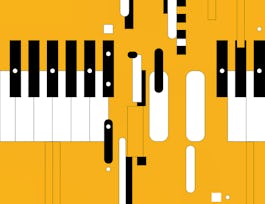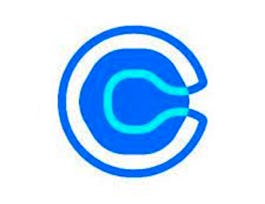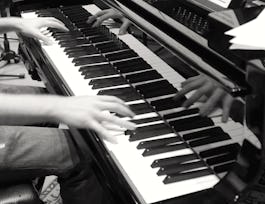This course is a brief introduction to the elements of music theory for those with little or no music theory experience. We will explore pitch, rhythm, meter, notation, scales, keys, key signatures, meter signatures, triads, seventh chords, and basic harmony. If you listen to music or play music by ear, and you want to know more about how music is organized and notated, this course is for you.


Getting Started With Music Theory
Taught in English
Some content may not be translated
108,205 already enrolled
(732 reviews)
Details to know

Add to your LinkedIn profile
13 quizzes
See how employees at top companies are mastering in-demand skills


Earn a career certificate
Add this credential to your LinkedIn profile, resume, or CV
Share it on social media and in your performance review

There are 4 modules in this course
Learning Outcomes: By the end of this module, you should be able to: (1) discuss the elements of music, (2) explain the difference between tonal and atonal music, (3) sing the tonic in tonal music, (4) identify the fundamental and partials of a note, (5) explain the difference between chord and harmony, (6) explain the five-line staff, (7) read and write notes using treble and bass clefs, and (8) identify rhythmic values in notation. You should be able to (9) distinguish between pitch and pitch class, (10) describe octaves and how to label pitches based on octave placement, (11) identify and write accidentals and find them on the piano keyboard, (12) and define equal temperament (the artificial scale used on the modern piano) and tell how it differs from other tuning systems.
What's included
9 videos1 reading4 quizzes2 discussion prompts
Learning Outcomes: By the end of this module, you should be able to (1) describe the diatonic set and understand how it is used to create major and minor scales, (2) sing major and minor using solfeggio (solfege) syllables, (3) explain the difference between natural, harmonic, and melodic minor, (4) spell major and minor scales starting on any note using accidentals in treble and bass clef, and (5) spell parallel and relative major and minor scales. You should also be able to (6) identify and spell by size and quality diatonic intervals (within a key) and chromatic intervals (outside a key).
What's included
12 videos3 readings4 quizzes2 discussion prompts
Learning Outcomes: By the end of this module, you should be able to (1) read and write all possible rhythmic values, including dotted notes and ties, (2) understand how many notes fit within a measure in various meters, (3) determine meter signatures based on note grouping, and note grouping based on meter signatures, (4) define the types of musical accent and how they create a sense of meter, (5) distinguish between duple and triple meters in notation and by sound, and (6) describe and identify metrical syncopation. You should be able to (7) write melodies on the treble, bass, and grand staves using correct meter signatures, note values, rhythmic grouping, stem direction and beaming, and key signatures and accidentals,
What's included
6 videos2 readings2 quizzes1 discussion prompt
Learning Outcomes: By the end of this module, you should be able to (1) identify and spell major, minor, diminished, and augmented triads in root position and inversions, and (2) identify and spell major, minor, dominant, half-diminished, and fully diminished seventh chords in root position and inversions. You should also be able to (3) use Roman numeral labels to identify diatonic triads within a key, (4) write triads within a key when given Roman numerals, and (5) spell chords when given pop/jazz chord symbols.
What's included
8 videos3 readings3 quizzes2 discussion prompts
Instructor

Offered by
Recommended if you're interested in Music and Art

The University of Edinburgh

California Institute of the Arts

Coursera Project Network
Why people choose Coursera for their career




Learner reviews
Showing 3 of 732
732 reviews
- 5 stars
69.94%
- 4 stars
18.57%
- 3 stars
4.23%
- 2 stars
3.41%
- 1 star
3.82%

Open new doors with Coursera Plus
Unlimited access to 7,000+ world-class courses, hands-on projects, and job-ready certificate programs - all included in your subscription
Advance your career with an online degree
Earn a degree from world-class universities - 100% online
Join over 3,400 global companies that choose Coursera for Business
Upskill your employees to excel in the digital economy
Frequently asked questions
Access to lectures and assignments depends on your type of enrollment. If you take a course in audit mode, you will be able to see most course materials for free. To access graded assignments and to earn a Certificate, you will need to purchase the Certificate experience, during or after your audit. If you don't see the audit option:
The course may not offer an audit option. You can try a Free Trial instead, or apply for Financial Aid.
The course may offer 'Full Course, No Certificate' instead. This option lets you see all course materials, submit required assessments, and get a final grade. This also means that you will not be able to purchase a Certificate experience.
When you enroll in the course, you get access to all of the courses in the Specialization, and you earn a certificate when you complete the work. Your electronic Certificate will be added to your Accomplishments page - from there, you can print your Certificate or add it to your LinkedIn profile. If you only want to read and view the course content, you can audit the course for free.
If you subscribed, you get a 7-day free trial during which you can cancel at no penalty. After that, we don’t give refunds, but you can cancel your subscription at any time. See our full refund policy.



